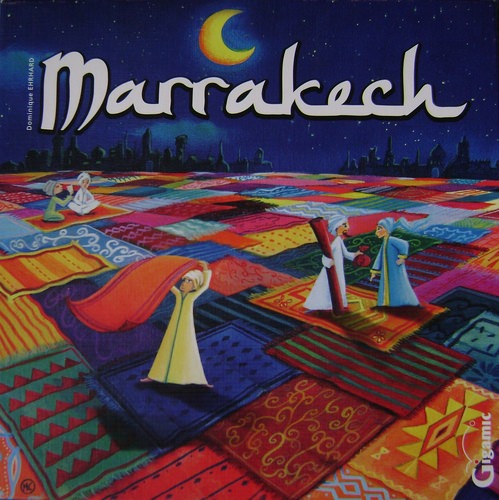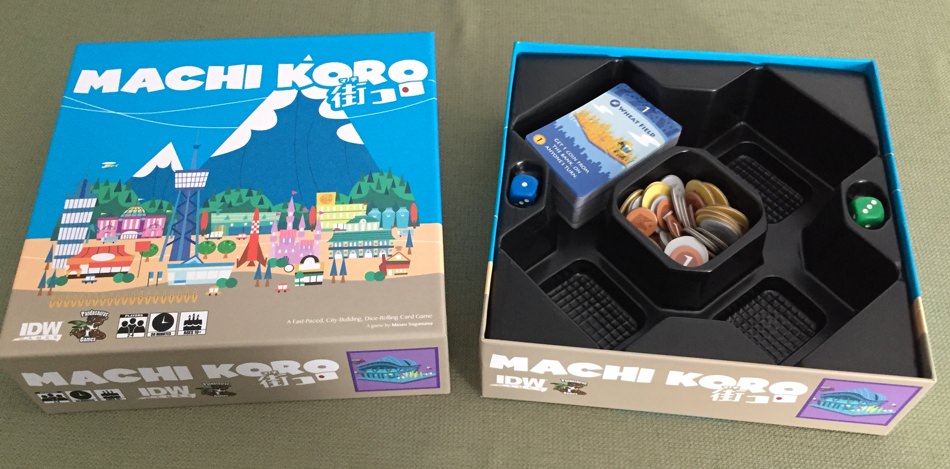Let’s battle over some European Royals!
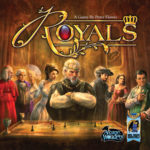
It’s hard to believe it’s been more than 6 months since Gen Con 2016 where I first got a taste of Royals from Arcane Wonders.
It was a memorable event because I was lucky enough to be taught Royals by the king himself – Burky!
To be honest, I wasn’t tempted by Royals when I first came across it. The setting was very impressive at Gen Con.
They had a big Royals banner backdrop and a couple copies of the game set up to play on a nice table with a fancy throne at end.
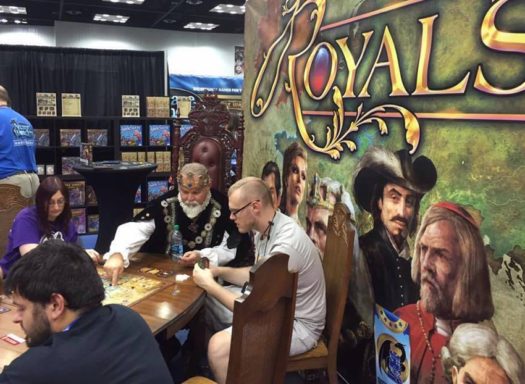
But the theme of influencing nobles across a map of Europe just didn’t appeal to me. At first blush, it all seemed kind of blah.
And then I played the game…
To my surprise, I found myself very engaged in the game and was disappointed when we were told that our game demo would end after just the first round!
Did they really expect me to just walk away and let other people get a taste of the game? Oh, the humanity!
Needless to say, I was excited when we later got a review copy of the game from Arcane Wonders to put it through its paces.
So now it’s time to share our thoughts on Royals.

How to play Royals
The premise of Royals is that each player is a leader of a great noble house vying for supremacy over Europe. Players influence nobles in various European cities to establish their control and earn victory points.
Players are also awarded points after each of the game’s 3 periods based on their control over the 4 different countries. As you’d guess, the player with the most victory points at the end of the game will be crowned the winner!
While the theme isn’t very original, the game play is surprisingly engaging.
Set up
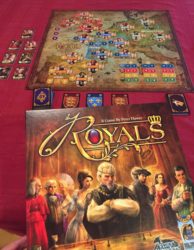
After all players have chosen a color and taken all the cubes in that color, the tokens are set out on the game board.
While there many be many tokens, they’re very easy to set out because of their different shapes and colors. The spaces on the game board indicate the shape, color, and value that are placed in each spot to begin.
The hex shapes relate to the cities, the shield shapes to the countries, the round shapes are for noble houses, and the square shapes are for the period majorities placed in the bottom right of the board.
The two parts of each noble are placed together to the side of the board to create each nobles Title marker.
The Country cards are shuffled and 3 are placed face up next to the face down draw pile. The Intrigue cards are also shuffled and the entire deck is placed face down and you’re ready to begin.
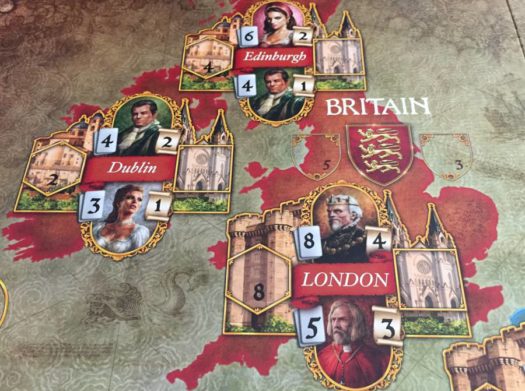
Player Turns
A player’s turn consists of 3 steps: Draw Cards, Play Cards, End Turn
1. Draw Cards:
A player begins their turn by drawing either 3 Country cards or 1 Country card and 1 Intrigue card and adding them to their hand.
When drawing Country cards, a player may choose to draw from either the face down deck or from the face up cards. If choosing face up cards, they are not replaced until the end of a player’s turn.
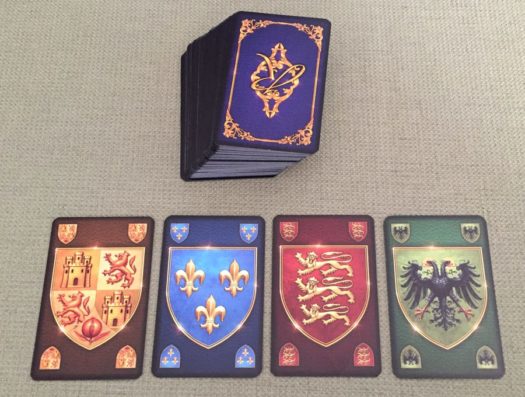
2. Play Cards:
A player may then play any number of cards from their hand.
To claim a noble on the board, a player must play the correct number of the matching color Country cards.
There are 1 or 2 nobles available in each City – represented by a portrait. The number to the left of the portrait indicates the number of Country cards needed to claim that noble. The number is the same for every noble of the same title. For example, a Baron requires 2 Country cards of the matching color.
When claiming a noble, the player discards the required cards and then places one of their cubes on that noble’s portrait on the board. In addition, the player places another cube on the matching Title marker beside the board.
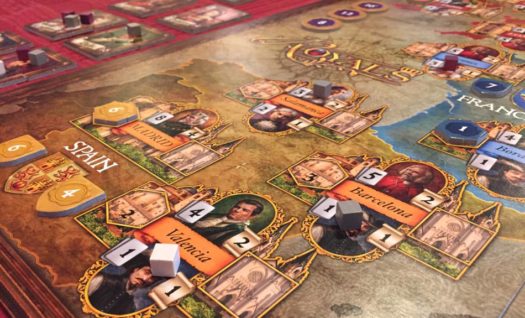
The number to the right of each noble portrait indicates the amount of Influence points in that country for controlling that noble.
When playing cards, players can also play any 3 Country cards as 1 Country card of their choice.
Players may also take over nobles controlled by other players by playing Intrigue cards.
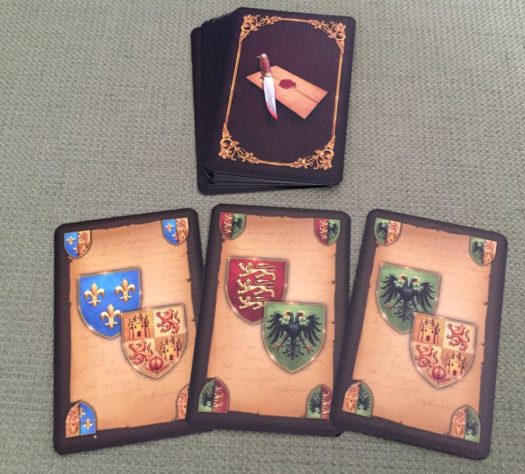
To do so, a player must play an Intrigue card for that noble’s country as well as the required number of Country cards to claim that noble. The player then places 1 of their wooden cubes on the portrait and a second cube on that noble’s Title marker at the side of the board.
When this action is taken, the original wooden cube on the portrait is vanquished and placed in the cathedral space to the right of the city (it’s buried). The vanquished player’s cube on the Title marker at the side of the board remains in place.
The only exception to the above Intrigue rules is with the King. A player must play 2 Intrigue cards that match the coat of arms of that country to take over a King.
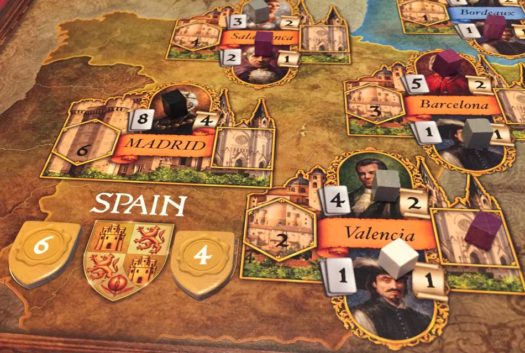
3. End Turn:
At the end of a player’s turn, they must discard down to the hand limit of 12 Country cards and 4 Intrigue cards.
If any face up Country cards were taken, they are now replaced from the draw pile.
Play then proceeds to the next player on the left.
Earning Victory Points
There are 3 ways to score victory points during a period and they’re done through bonus markers.
- The first player to claim a noble in a City takes that City’s hex bonus marker.
- If a player has at least one wooden cube in every City of a Country, they take the highest Country bonus marker available for that Country. (Vanquished nobles don’t count toward this bonus.)
- If a player has at least one cube on every Title marker at the side of the board, they take the highest available Noble House bonus marker.
Other ways to earn victory points come at the end of each period and at the end of the game.
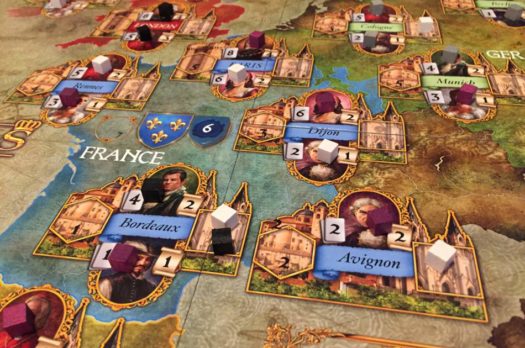
End of Period
When the face down deck of Country cards runs out, the period ends. Players then score End of Period victory points.
One Country at a time, all players add up their Influence points from the nobles they actively control in that Country. The player with the most Influence takes the higher Period scoring marker for that Country for the current Period. The player with the second most Influence claims the lower scoring marker.
If there’s a tie, the marker goes to the player who controls the highest titled noble in that Country.
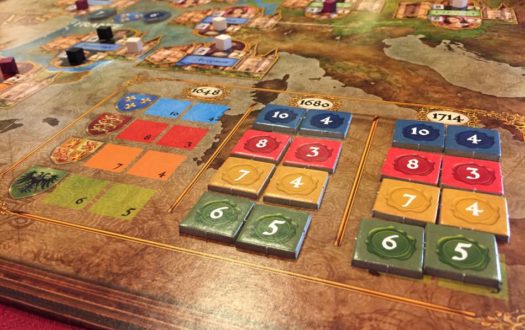
Game End
The game ends after scoring the third Period.
After that, the final victory points are awarded for players who control the most of each type of noble.
Starting with the lowest ranking noble (Marshal), players compare the number of wooden cubes on the Title marker. The player who has the most cubes on that marker claims it – earning the victory points indicated in the bottom right.
If exactly 2 players are tied for the most on a Title marker, the marker is split in two and turned over. Each tied player gets the number of points on the back half of the Title marker (which is half of the total for that noble).
If more than two players tie for most on a Title marker, no one claims that noble nor receives points for it.
Players then total up all victory points from their claimed tokens and the player with the most points wins!
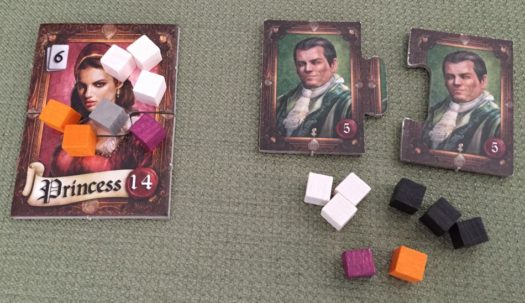
Can the whole family enjoy playing Royals?
While we still consider Royals a good family board game, not everyone in the family may enjoy playing.
First of all is the recommended age of 14+. Right off the bat this tells you that younger kids won’t be pulling Royals off the shelf to play on their own.
It isn’t that Royals is full of complicated rules. In fact, there aren’t many rules to memorize anyway. Collect cards and then turn in sets to place your cubes to get points. Instead, the mental challenge is deciding between the various ways to score and trying to do so before your opponent. And those options are a bit advanced for young kids.
Yet we still consider Royals a good family board game because of how approachable it is for teens and above.
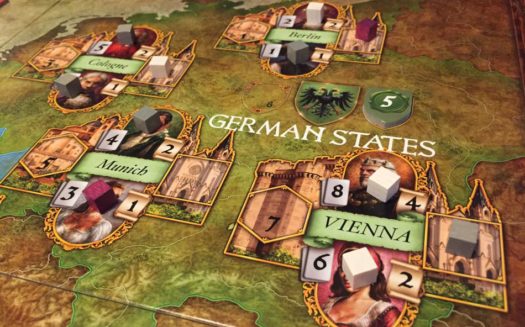
It’s a straightforward set collection, area control game with various ways to score. And the same could be said of Ticket to Ride – the poster child of modern family board games. In Ticket to Ride, players collect sets of colored cards to claim areas of the board (routes) to score points. By being the first on a spot, they can also block other players along the way.
The same holds true in Royals. Players collect and play sets of colored cards to claim areas of the board to score points. If they’re first to do so, they also block others from doing so.
However, Royals goes a couple steps further than Ticket to Ride.
First of all, players can play Intrigue cards to knock other players out and take over influence in a city. Second, players have more ways of scoring points throughout the game as well as between periods and in the end.
While Ticket to Ride does have some end-game scoring opportunities (completing tickets, longest route), it doesn’t have any mid-game point scoring opportunities like there are in Royals.
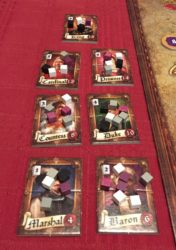
So not only do players in Royals need to have a long term strategy of where they want to push their influence, they also need to take advantage of short-term scoring opportunities.
And it’s that balance of long-term and short-term planning and maneuvering that create a very nice next level challenge for families that like set-collection and/or area control type games.
As with other great family board games that offer various scoring options, players can’t do it all. There just isn’t enough time in the game to do everything you’ll want to do. So picking only a few options to pursue and adjusting it based on what other players are doing is key to doing well in the game.
The only element of luck in a game of Royals is the card draw. Having 3 face up Country cards to choose from as well as the potential to draw unseen face down Country and Intrigue cards means the balance leans further to the strategy side of the equation than luck.
Just like claiming routes in Ticket to Ride, Royals delivers a great tension from not know exactly when other players are going to swoop in and claim the noble you were hoping to influence. The first to claim a noble in a city gets the points for that city as well as the influence that comes with it. So striking before others is of great benefit.
And it’s exactly that tension that quickly drew me during my first play of Royals at Gen Con and kept me want to play more. (That and the fact that I didn’t do as well in the first end of Period scoring and wanted to exact my revenge in the second Period – which I never had the chance to do.)
I’m very happy I was introduced to Royals because it’s been a fun game to play and I look forward to diving in again.
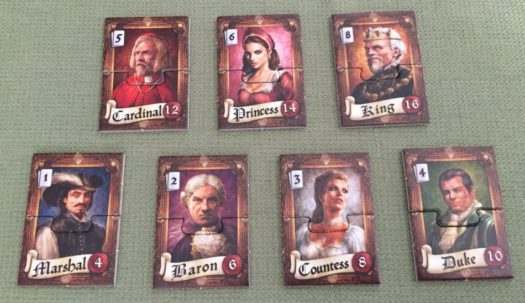
Royals game insert from Insert Here
I’m also happy to report that Insert Here has a great game box organizer for Royals.
We like the foam core insert from Insert Here because of how easy it is to separate the different cubes, token, markers, and cards into different areas. Having them all in their compartments makes game set up a breeze.
And if players want, they can simply pull their wooden cubes from the trays during game play.
Here are a couple photos to see for yourself.
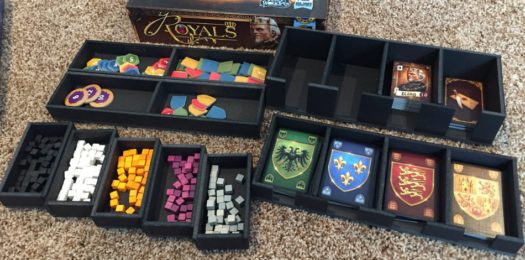
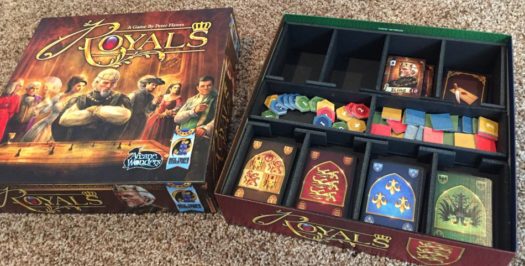
How does Royals score on our “Let’s Play Again” game meter?
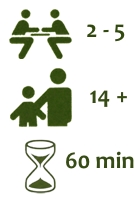 Writing this review has me chomping at the bit to get Royals to the table again. With so many ways to score, I always leave the game table wanting to play it “one more time”.
Writing this review has me chomping at the bit to get Royals to the table again. With so many ways to score, I always leave the game table wanting to play it “one more time”.
Royals has been a hit with our Guys Game Night group because of how easy it is to dive into for first time players yet also delivers a solid game experience for those already familiar with the game. And once the guys get a taste of using the Intrigue cards to spoil another player’s plans, game on!
Which of course, leads itself well to “let’s play again!”
If you haven’t seen our reviews of other Arcane Wonders games, you really should. Because we’ve enjoyed every Arcane Wonders game we’ve played!
And if you’d like to see even more Royals, including a play through, check out Board Game Theater’s Gameplay video.
We’d like to thank Arcane Wonders for a review copy of Royals and Insert Here for the Royals game insert.

